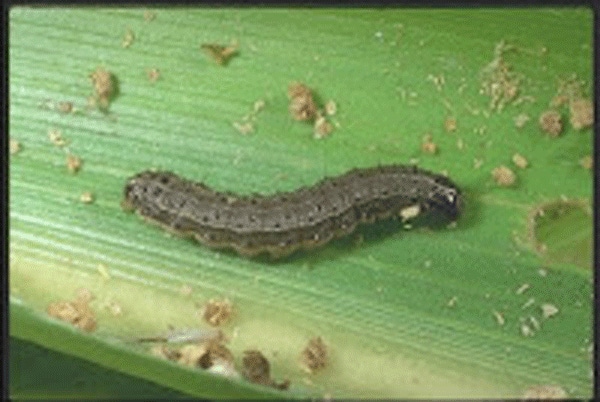August 14, 2012

Capture of fall armyworm (FAW) moths in UK-IPM pheromone-baited traps has increased substantially over the last week.
Until recently, there had been no FAW moths captured at the UK-REC in Princeton (Caldwell County) and only small numbers in Cam Kenimer’s trap line in Fulton County, KY.
In the trap week ending Aug. 9, the capture increased from zero to 131 moths per week at the UK-REC, although the Fulton County trap counts remain low.
It is difficult to know what the increase at the REC might mean. However, a producer in Caldwell County (the county in which the REC is located) has seen a small number of FAW crossing a road.
Additionally, reports from counties farther east and south report FAW infestations in pastures (they must have gotten some rain!!!). Add to this reports from our colleagues in states to the south, indicating increases in FAW activity in areas that have received recent rains, and I think this adds up to checking to make sure they are not present in your fields.
At this time of year FAW are primarily a risk to soybeans and pasture/grass hay fields. They would also attack corn, but we are too far along for this to happen in our major corn growing area.
Nevertheless, this insect can be quite voracious so producers of soybean and pasture/grass hay are encouraged to check your fields to look for this critter.
FAW is a migratory pest in Kentucky and is only an occasional pest of soybeans; but it can cause serious damage if infestations are large. Soybeans are not a preferred host crop, but may be infested, especially in years when grass crops are not available. Given our unprecedented drought that is certainly the case this year.
This is primarily a defoliating pest, but can feed on pods as well.
Newly hatched FAW are white with a black head, but the body darkens as it grows. Full-grown larvae are up to one and a quarter inch long, have black bumps, and may be light tan to dark green. The black head will have a distinct inverted “Y”.
Thresholds for this pest in soybeans are not well established in Kentucky. Like corn earworms, if sampling in wide row beans with a three-foot shake cloth, the threshold would be an average of 2 worms per row-foot. If sweeping narrow rows with a 15-inch sweep net, an average of 9 larvae per 25 sweeps would indicate a need for control.
Thresholds for FAW in pastures/grass hay fields are also not established. Clearly the insect can do great damage in some situations.
In states farther to the south of us 4-6 or 5-7 worms per square foot are used as the economic threshold. Though the season would be earlier and the grass variety different, that is probably as good as starting place as any.
If insecticidal control is required check ENT-13 (for soybeans) or ENT-17 (for pasture/grass hay) for a listing of registered insecticides. These publications may be obtained from your county extension office or on the web at http://pest.ca.uky.edu/EXT/Recs/welcomerecs.html.
You May Also Like




